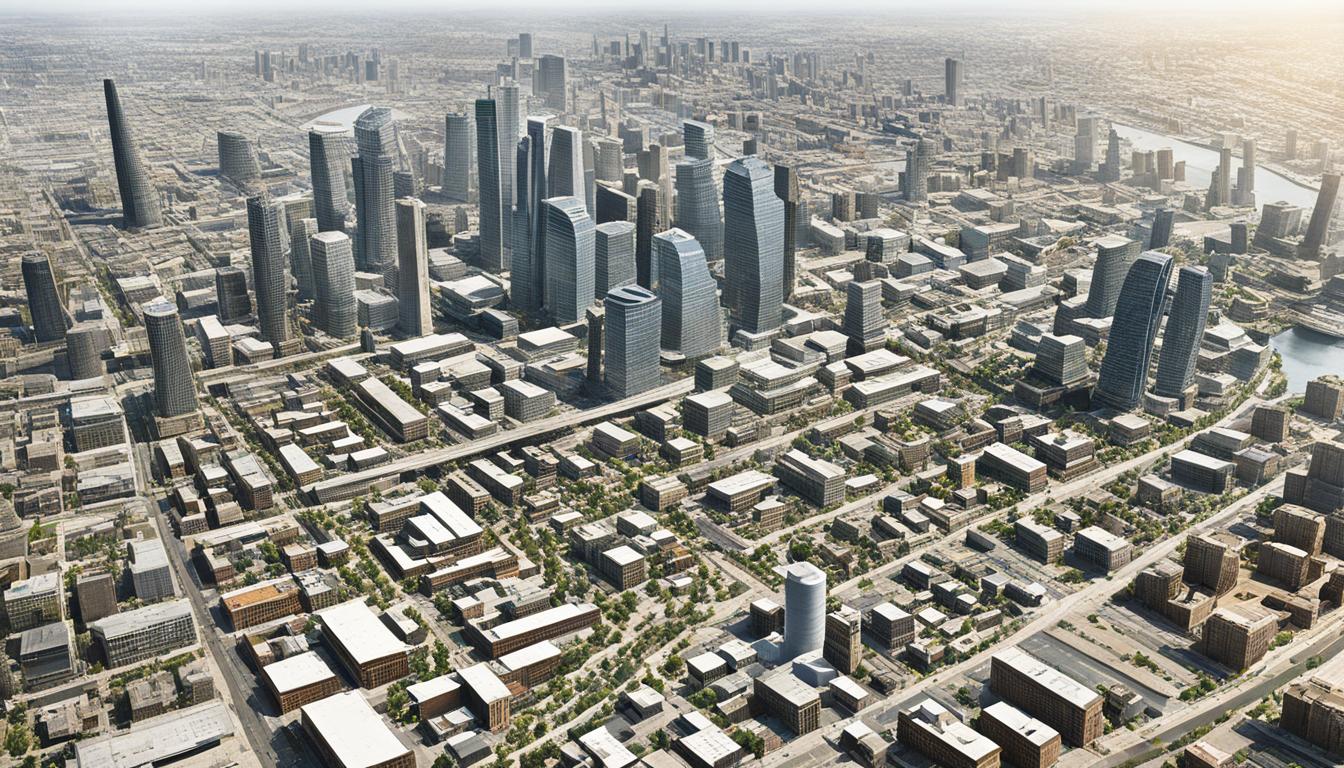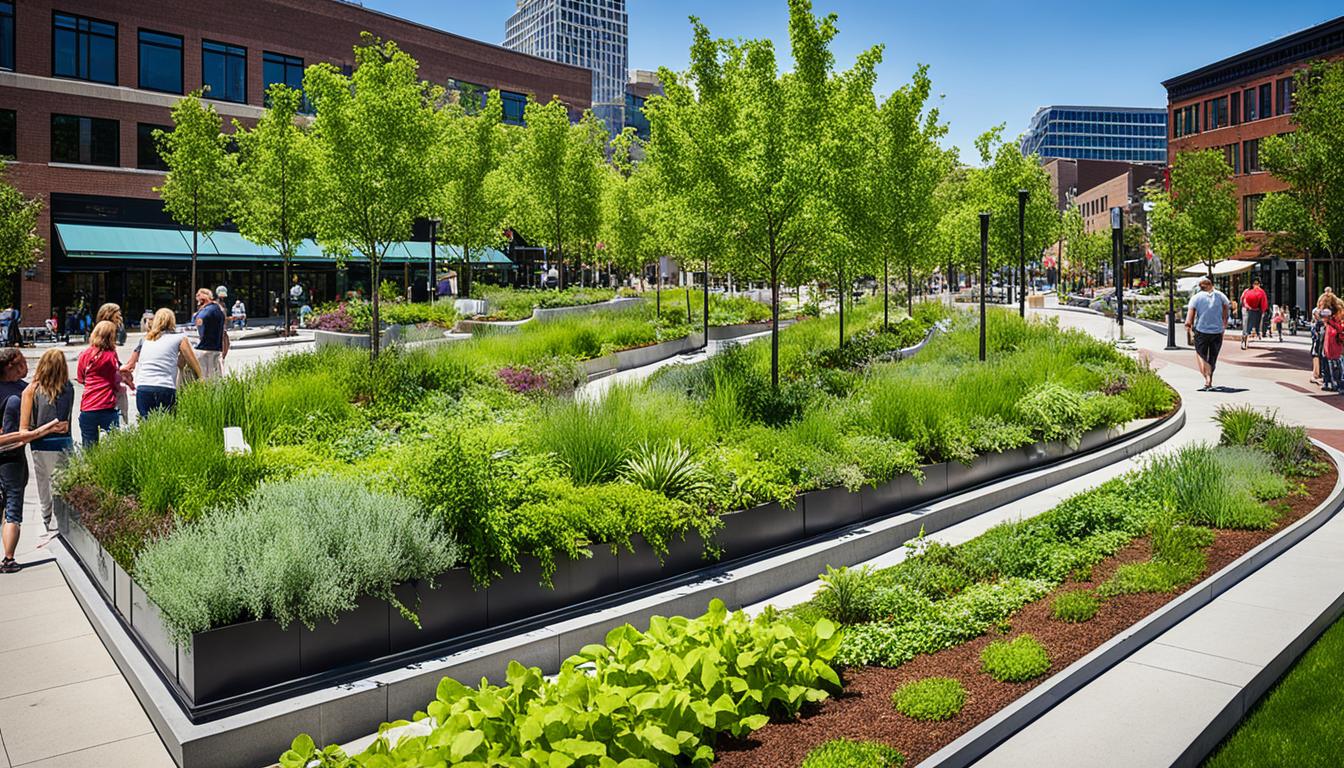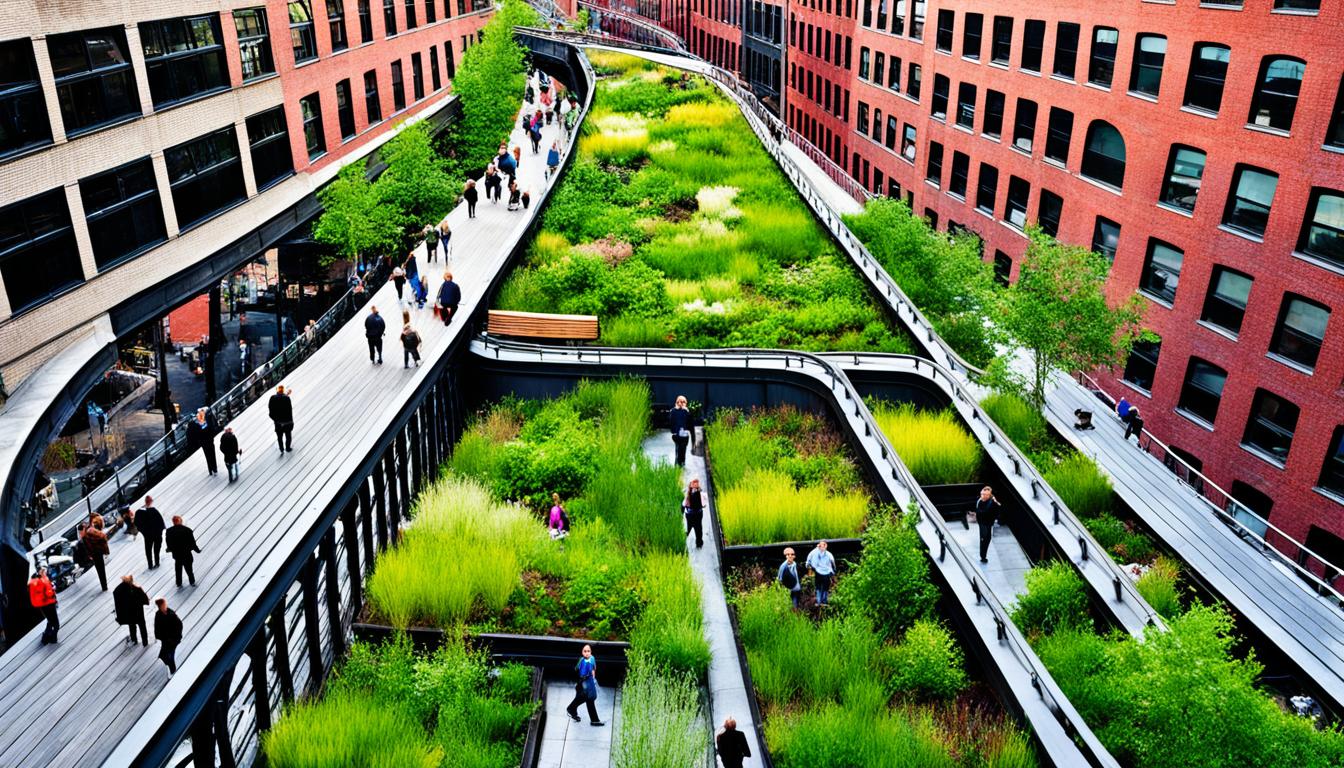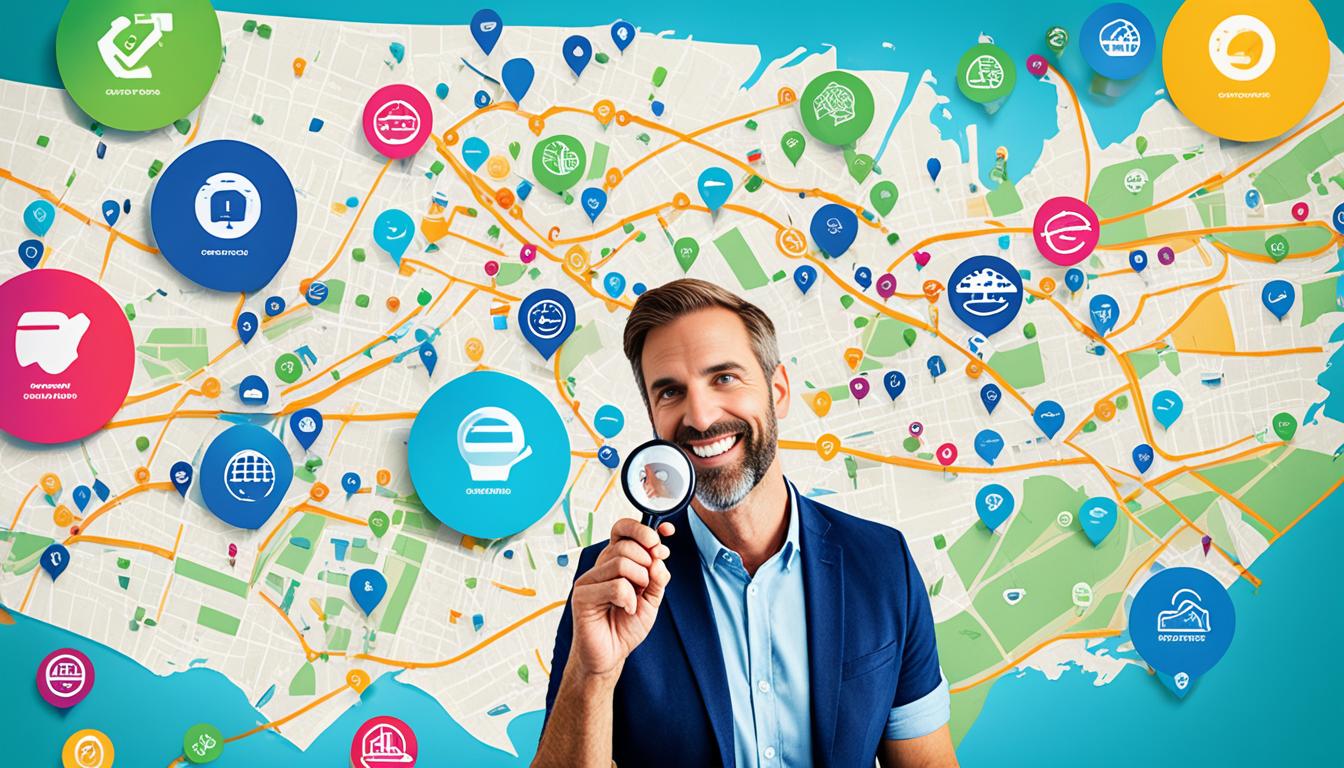Innovative approaches to urban redevelopment and sustainable growth
Urban redevelopment changes cities, making them better places to live. We’re looking at new ways to do this, focusing on growth that lasts. We consider money, people, and the planet to make cities where everyone thrives.
Cities are always changing, and so are the ways we improve them. Now, we don’t just work on how a city looks. We think about if changes will work well for people, be good for the city’s money, and keep it green.
Key Takeaways:
- Urban redevelopment is essential for transforming urban landscapes and revitalizing communities.
- Innovative approaches prioritize sustainable growth and consider economic, social, and environmental factors.
- Successful urban redevelopment requires a holistic approach that goes beyond infrastructure and aesthetics.
- Community participation, mixed-use development, adaptive reuse, green infrastructure, public-private partnerships, and intelligent technology are key tactics for successful urban redevelopment.
- Case studies, such as The High Line, Vauban, Songdo, Distillery District, and Pearl District, provide valuable insights into the practical application of innovative urban redevelopment strategies.
The Evolution of Urban Redevelopment
Understanding the history of urban redevelopment is key before looking at new methods. In the past, changes focused mainly on how things looked and were built. Now, we see a change to consider more: is it good for the economy, do all people benefit, and is it kind to our planet? This broader view has led to better city upgrade plans.
“The history of urban redevelopment reveals a progression towards more sustainable and inclusive approaches.” – John Smith, Urban Planner
Urban redevelopment began early in the 20th century due to crowded and poor living conditions. Cities saw a need to clean up and keep up with modern times. This led to bigger projects focused on clearing slums and making things new.
By the mid-1900s, the focus shifted to making money. Urban renewal was all about businesses and making cities look modern. Unfortunately, this often meant pushing out poor and marginalized groups.
Over time, we learned from the mistakes of the past. The idea of urban redevelopment grew to include the environment and how people were affected. Making sure a project makes money and is good for the community and Earth is now key.
Integration of Social Inclusion and Environmental Sustainability
Today, making sure everyone is involved and that the Earth isn’t hurt is very important in city projects. People from different backgrounds should have a say. This helps heal old wounds and makes cities feel like home for everyone.
Green and eco-friendly projects are also huge today. Cities are adding things like parks on roofs and ways to clean rainwater. These not only help the planet but also make life better for those who live in the city.
As more people move to cities, improving how we do urban redevelopment is critical. We must look at the past and try new methods. Making sure cities help everyone, are good for the economy, and protect the planet is how we can make better places for all.

Tactics for Successful Urban Redevelopment
Turning cities around requires smart strategies designed for each place’s unique character. By using these approaches, urban areas can become lively and lasting places to live.
1. Community Participation
Getting the community involved is crucial for urban renewal. Local residents, businesses, and groups all help plan and make decisions. This teamwork makes everyone feel invested and ensures the project fits the community well. It leads to a space that’s welcoming to all.
2. Embracing Mixed-Use Development
Mixing different areas together is key in city revitalization. This kind of planning blends living, working, and fun spaces, making neighborhoods more interesting. It uses space well and creates a lively atmosphere. Mixed-use areas offer a mix of homes, shops, offices, and places for people to gather.
3. Preserving Historically Significant Structures through Adaptive Reuse
Reviving historic buildings in new ways breathes life into urban areas. By giving old places new uses, we get both beauty and memory. This method adds to a city’s charm and keeps its history alive. Old spaces can become art venues, homes, or places for the community to gather.
4. Incorporating Green Infrastructure for Sustainability
Adding green spaces is key for healthy, resilient cities. Parks and gardens are more than pretty scenery. They clean the air, manage rainwater, and help keep the city cooler. Building with nature helps cities fight climate change and supports local wildlife. It also encourages people to walk or bike instead of driving.

5. Fostering Public-Private Partnerships for Resource Sharing
Teaming up with both private and public groups can really move a city forward. These partnerships take the best from both sides to do more together. This way, cities can innovate and grow without losing sight of their public goals. Working together leads to stronger, longer-lasting projects.
6. Implementing Intelligent Technology to Enhance Urban Life
The future of cities lies in smart technologies. By using data and smart systems, urban areas can run better and be safer. These changes range from energy-saving buildings to smarter traffic that moves people faster. Smart tech makes cities more livable, boosts the economy, and helps the planet.
Creating better cities involves a blend of community work, smart planning, reuse of old spaces, nature, partnerships, and tech. By weaving these together, we design cities that grow and thrive for everyone in them, now and in the future.
Case Studies in Urban Redevelopment
Case studies show us how innovative strategies can transform cities. They teach us how to turn old areas into new, vibrant spaces.
The High Line: Transforming Abandoned Infrastructure into a Vibrant Park

The High Line changed New York City’s abandoned railway into a lively park. It’s now a place where people can walk through gardens, see art, and enjoy city views. It proves that old spaces can become new again with the right approach.
Vauban: Embracing Sustainability in Freiburg, Germany
Vauban in Freiburg, Germany focuses on being green and sustainable. It’s famed for its energy efficiency and no-car zones. The neighborhood has lots of green areas and energy from renewable sources. It shows how to build eco-friendly places that are also nice to live in.
Songdo: The Smart City of South Korea
Songdo in South Korea is a leader in smart city technology. It uses modern systems to make life better for its people. These include smart waste systems and energy-saving buildings. The city is a great example of how to manage resources well and use tech to benefit everyone.
Distillery District and Pearl District: Transforming Urban Spaces with Mixed-Use Development
Distillery District in Toronto and Pearl District in Portland are great examples of successful mixed-use development. They’ve turned old industrial spots into lively areas. These areas now have everything from shops and restaurants to theaters. Both places show how diverse planning can make a community blossom.
Studying these cases gives us smart ideas for making our cities better. The examples from The High Line to Pearl District teach us a lot. They show how to reuse old places, support the environment, use technology, and make areas that bring people together. They’re an inspiration for cities all over the world.
Conclusion
Urban redevelopment is a key part of making cities more sustainable and better places to live. It involves techniques like getting people involved, building in several ways, reusing buildings, using green features, working together with both the public and private sectors, and using smart technology. These methods help turn city areas into places where many different things happen, making cities livelier. This work aims to make cities better for people to live in, as well as better for the environment.


